Adam Wiseman’s Ventanas
Tanya Huntington
Last week, I talked my husband Francisco into helping me lug a six-foot photograph of someone else’s living room across ten blocks of our Mexico City neighborhood. The photograph had been mounted directly onto pressboard an inch thick, which made it a lot heavier than anticipated. The format was too large to fit into the back seat of a taxi: any attempt to wedge it inside would have damaged the surface of the print. The window of opportunity was brief. And to top it all off, I don’t happen to own a dolly, which is why I made the command decision to carry it home by hand.
There are no people portrayed in the photograph in question, and yet their presence can be felt. The living room boasts a symmetry that reveals careful deliberation. In the composition, two different birdcages are positioned on either side of an invisible central line that divides the scene in half. The seemingly identical occupants (male and female?) are perched on top of the cage to the right. A chunk of urban nightscape is visible through an opening in the baby-blue, polyester curtains that hang on the wall behind the parrots. The room itself has been personified by the depiction and is therefore emotionally charged. The intimacy of such a clearly private setting feels uncomfortably exposed out on the street, nevertheless the effect is captivating: people stop and stare as we pass by, inventing their own narratives for the tableau.
Francisco and I take a breather at the corner of Nuevo León and Michoacán, where people are lined up waiting to order their lunch from a food cart. We rest the bottom edge of our burden on top of our shoes to keep it from getting dirty. My fingers are cramped from gripping the print. I seize this opportunity to joke to Francisco that I hope this won’t be considered cause for divorce. Breathing heavily, he arches an eyebrow as his sole reply. I have risked domestic bliss for the sake of art. But how could I resist?
I’d received the text message from photographer Adam Wiseman the night before: he was dismounting his exhibition at Salón Malafama, a local pool hall-slash-artspace, and because of the rather unwieldy format of the prints, he had decided to give some of them away to select friends, inviting us to display them as mise-en-scénes in our own living rooms. All I had to do was show up at Malafama and give the code word “gallina”. If in retrospect I took his “first come, first served” admonition a bit too seriously, it is because this series by Wiseman matters to me. In fact, it has assuaged my concerns regarding the direction contemporary art has taken of late: I am rather leery, to put it lightly, of the extent to which we are expected as artists to outsource our work to a viewing public that may be undeserving or worse yet, uninterested. This alarming trend is summed up in a recent installation by Luis Camnitzer, which consists of posting the following maxim in large letters on various walls near museum entrances, “The Museum is a School: The artist learns to communicate, the public learns to make connections.” What was my reaction to this initiative? “Now there’s a novel way to try and get the public to flock to museums,” I thought. “Tell them it’s like being forced to go back to the third grade.” I wondered who the teacher is supposed to be in this scenario. I also wondered whether, if visitors fail to make these connections or simply decline to take on the responsibility for the success or failure of an exhibition, they will flunk out of contemporary art.
But then Wiseman’s Ventanas: Tlatelolco desmentido showed me that this approach can work, despite my misgivings. The project hinges entirely on the willingness of the inhabitants of a public housing project to allow the photographer to portray their res privada, inside and out. The 15-story Chihuahua Building was chosen by Wiseman as the location for his shoot as he was riding past it on his bicycle one evening and, in an epiphany that recalls Saint Paul’s conversion, was suddenly struck by the diversity of lives denoted by the presence (or absence) of lights in the windows that filled the building façade, so uniform by contrast. The Chihuahua is not just any public housing project: here in Mexico, it carries quite a lot of baggage. It borders Tlaltelolco Square, also known as that of the Three Cultures in reference to the successive historical stages represented by the architecture there (pre-Colombian, colonial, and modern). Those who are colonial history buffs will no doubt recognize Tlaltelolco as the open-air market that provided the backdrop to the final battle between natives and conquistadors, the site where Cuauhtémoc, the last emperor of the Aztecs, surrendered to Cortés in 1521 after a bloody confrontation that claimed over 40,000 lives, according to the eyewitness account provided by Bernal Díaz del Castillo in his True History of the Conquest of New Spain. Created in 1964 by architect Mario Pani, the Nonoalco Tlatelolco complex was meant to act as a utopia in the midst of urban chaos, one that would be marred just four years later by another massacre, in which the military opened fire against student protestors. There is no consensus as to how many were killed on this occasion: estimates range wildly from 30 to 300. And the calamitous history of Tlaltelolco does not end there. In 1985, hundreds more died when a devastating earthquake that struck Mexico City caused one of the buildings to collapse: the Nuevo León, identical in construction to the Chihuahua building that Wiseman has rendered.
I feel it is important to stress that while Wiseman does not gloss over the past, his Tlaltelolco desmentido, or Tlaltelolco Disproved, overcomes the stigma associated with war and catastrophe to reveal the much less dramatic and yet, touching impact of everyday, lower middle-class existence in Mexico City. The opposite of collapse, his portraits of living room interiors show the accumulation of layers of meaning and memory that are revealed through painstaking collections of porcelain figurines, or proudly cultivated houseplants, or color schemes that transform the uniform spaces with palettes that range from beige to hot pink.
To complement these interior worlds, Adam Wiseman shot a series of photographs that encompass the entire façade of the Chihuahua building over the course of 23 minutes, having previously requested that the residents participate in a voluntary session of turning their lights on and off in different rooms of their apartments every 15 seconds. In the book he is currently piecing together to showcase his project, these photographs can be perused as if bound into a flip book, thus reproducing the sequence of the session. On the spur of the moment, following the advice of installation artist Melanie Smith, Wiseman also filmed a video of the project.
This video was what provided me with what I can safely term a truly cathartic experience. It was projected at the renovated Centro Cultural Universitario de Tlaltelolco (CCUT ) as part of the group show T de Tlaltelolco, dedicated to the neighborhood itself, under the curatorship of Julio García Murillo. The exhibition itself was a resounding success, breaking records for attendance. An intern who was present at the June 2015 inauguration told me that the museum fire alarms were activated by the collective body heat of the crowd. I cannot help but surmise that a significant portion of this show’s success in breaking down the barrier between the museum and the viewing public was owed to Wiseman, who truly engaged local residents and harnessed their creative energy as a community in order to create this poignant series.
As I sat before the screen, silently cursing the infiltration into the museum space of daylight that made the visibility of the nocturnal shoot considerably more challenging, I didn’t realize at first what I was looking at. Watching the lights of the Chihuahua building blink on and off, I assumed the footage had been sped up. Then it hit me that the passersby whose silhouettes appeared on camera were moving in real time: the sense of oddity triggered by this discrepancy vibrated in my awareness and captured my attention for the duration of the video. I could tell as I watched that the production values were deliberately rustic, that the voices of Wiseman and his crew could be heard coordinating the still shots while the camera was rolling. It seemed to me the perfect way to capture a scene where nothing out of the ordinary and something very much out of the ordinary were taking place at the same time.
Later on, during a conversation we had regarding Ventanas: Tlaltelolco desmentido, Wiseman told me that it was the first project he had embarked on in which he had found himself obliged to conform to total uncertainty. Would the neighbors participate, or would they balk at the last minute? Once he realized that any anomalies would not sabotage the outcome, but rather enrich it, he understood that this surrender of absolute control on the part of the artist was a determining factor in its success. And he felt he was onto something big. As a member of the public in charge of “making the connections”, I found it unusually moving. Where crowdsourcing is used as a technique, things tend to be more despotically choreographed: if you refuse to take your clothes off for Spencer Tunick, you don’t get to participate in his shoot. But if you decide not to turn your lights on and off for Adam Wiseman, you are as much a part of the Ventanas project as if you’d welcomed him into your living room to photograph your parrots and their respective birdcages.
I believe that art should affect us emotionally, that it should “movernos el tapete,” as we say in Spanish. The unexpected release caused by viewing Wiseman’s photographs and video of these living spaces, inside and out, has to do with the fact that his portrayal of the Chihuahua building does not lead to a sense of hopelessness or urban anonymity and decay. On the contrary, we cannot help but feel the variety and richness of the human experience that vibrates behind every light that goes on, or stays off.
*Images by Adam Wiseman
 Tanya Huntington is the author of Return and Managing Editor of Literal. Her Twitter is @Tanya Huntington
Tanya Huntington is the author of Return and Managing Editor of Literal. Her Twitter is @Tanya Huntington
Posted: February 7, 2016 at 9:24 pm


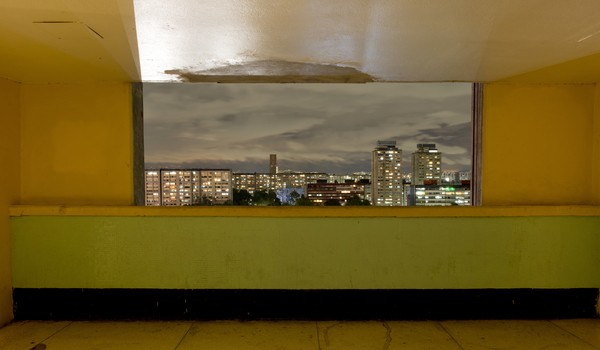
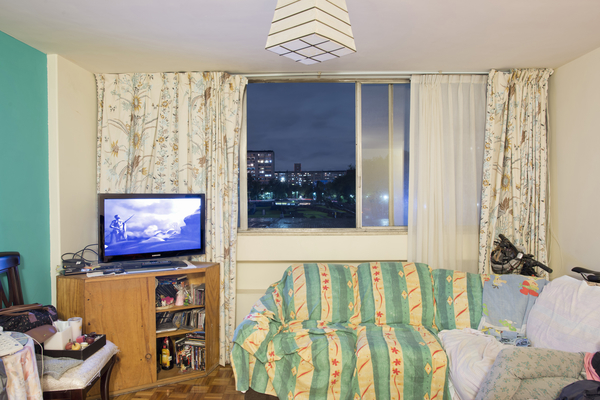

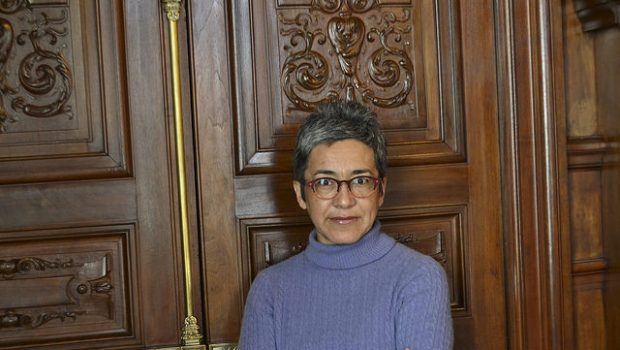


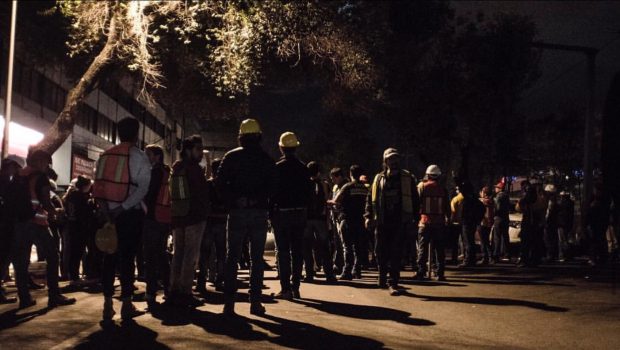

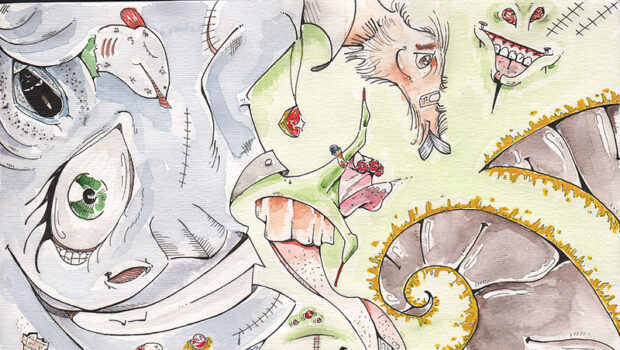


Adam Wiseman looks through his lens with a deep connection to the human soul.